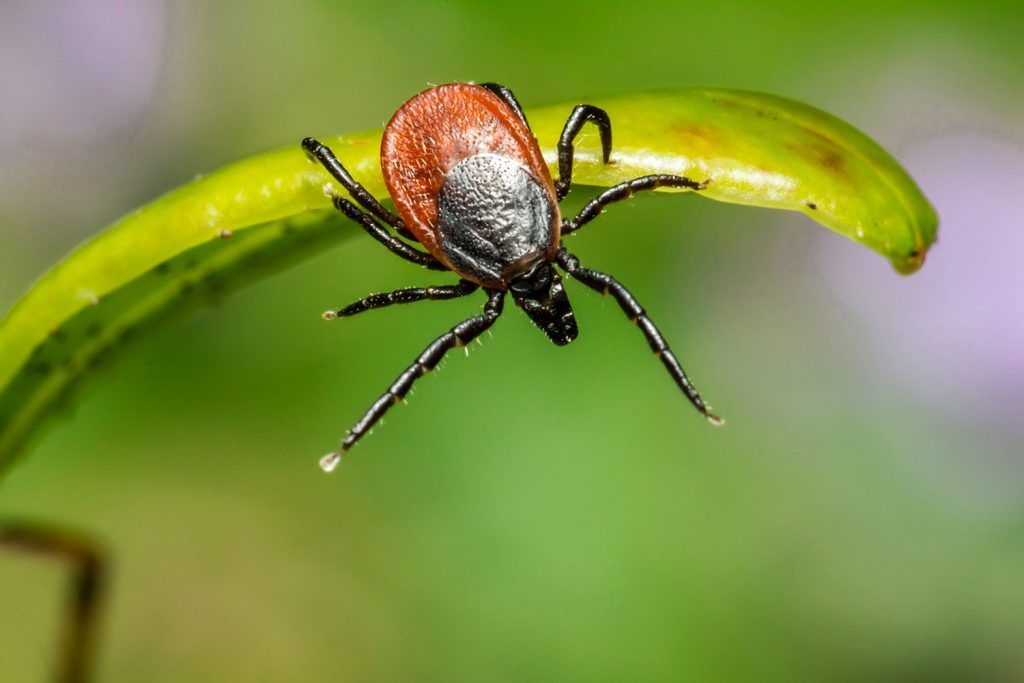
Warmer weather, sunshine, and blooming flowers are all characteristics of springtime that everyone looks forward to after a harsh winter. While we’re enjoying the change of seasons, it’s easy to forget the more unfavorable issues to consider, such as ticks, especially if you’re spending more time outside.
Tick season begins simultaneously with the start of spring but doesn’t end until mid-to-late October. This is the time of year that you should be checking for tick bites, as they can transmit Lyme disease.
What is Lyme Disease?
Lyme disease is a bacterial infection that ticks carry if they bite infected mice or deer. Infected ticks can then transmit the disease to you through their bite. This disease affects thousands of Pennsylvanians each year and is the most reported infection transmitted by an insect to humans in the United States.
Removing Ticks Safely
After 24 hours of tick attachment, the risk of getting Lyme disease rises to 15%, and to even higher levels after 48 to 72 hours. If you notice a tick attached to you or a loved one, you will want to remove it as quickly and safely as possible. It’s important to know that you should not swat, smash, or squeeze it, as it can accelerate the infection process. Ultimately, it is best if the tick stays intact during removal as Lyme disease rests within its whole system.
- Use tweezers to steadily remove the tick. Wear gloves if possible.
- Kill the tick by soaking it in rubbing alcohol or flushing it down the toilet. Do not crush it.
- Wash the area with soap and water to clean the area the tick was found.
A small rash (size of a quarter) may be visible after removal. If the bull’s eye or target rash grows from 6 to 30 centimeters, this may be an early indicator of Lyme disease.
If you find a tick on your person, unattached, and while outside, it is safe to just brush it off. If you are indoors, make sure that it is brushed off outdoors or killed so it does not later attach to another person or pet.
Lyme Disease Symptoms
If you are bitten, do not panic. You may see the following symptoms days or weeks after a tick has been attached to you for at least 24 hours:
- General ill feeling
- Chills
- Fever
- Headache
- Fatigue
- Muscle or joint pain
- Stiff neck
- Rash at the bite site (expanding red circle with a bull’s eye or target appearance)
In more severe cases, Lyme disease can cause problems with nerves and thinking. When detected early, the disease can be treated effectively with antibiotics. For best results, seek treatment by a physician who follows guidelines established by the Centers for Disease Control and Prevention and the Infectious Disease Society of America as soon as you show signs of these symptoms.
Prevention is the Best Approach to Lyme Disease
If you know that you are going to be spending time outside in wooded, overgrown, or grassy areas you should prepare to do the follow to prevent tick bites.
- Pick the right clothing:
- It is harder for ticks to attach if you’re wearing a hat, long sleeves, and pants tucked into boots.
- Wear light colored clothing so that ticks are easily visible.
- Treat your clothing with Permethrin or purchase pre-treated clothing with tick repellent.
- Use hot water and high heat to wash and dry your clothing soon after returning indoors.
- Use insect repellent:
- Make sure this repellent contains at least 20% DEET. DEET is a substance that has been studied by the Environmental Protection Agency and deemed safe for human use.
- Natural repellents such as lavender, peppermint, lemongrass, thyme, and garlic oils may also prove effective.
- Check thoroughly:
- Check and double check your clothing and skin for ticks. These insects are very small, about the size of a pinhead. Asking for an extra pair of eyes to help look for them after an outing would be even better.
- Shower within two hours of being outdoors. Ticks will seek out the warmest parts of your body, like your scalp, armpits, and groin. Start from the top of your body and scan your way down.
- Comb through the hair and lift strands to look behind the ears, along the scalp line, and then along the part.
- Examine the neck, shoulders, and arms. Raise the arms and carefully examine the area along the armpits.
- Check the abdomen and back as well as the buttocks and groin areas.
- Carefully scan legs, ankles, and toes.
If you experience a tick bite and need medical attention, call your primary care provider. To find a primary care provider, visit UPMCSusquehanna.org/PrimaryCare.
By: Rutul Dalal, MD, medical director of Infectious Diseases, UPMC Northcentral PA


